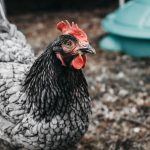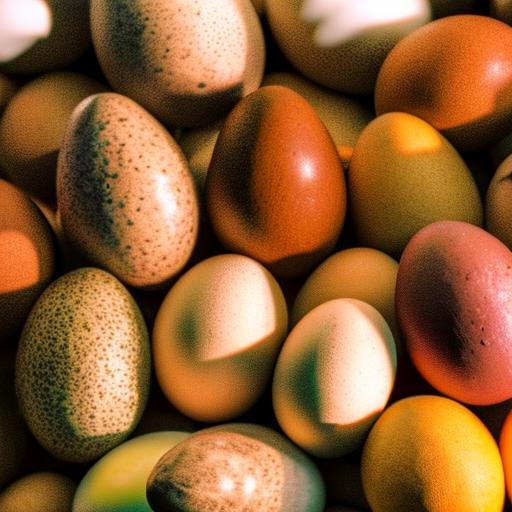Large chicken breeds are favored by many poultry farmers and backyard enthusiasts due to their substantial size, which makes them excellent sources of meat and eggs. These breeds are often characterized by their calm and friendly temperaments, making them valuable additions to flocks. Large breeds offer various benefits for those raising chickens for meat, eggs, or as pets.
Large chicken breeds exhibit diverse physical characteristics, including a wide range of colors, feather patterns, and comb types. This variety contributes to their visual appeal and allows for flock diversity. Examples of popular large breeds include the Orpington and Brahma.
These breeds are known for their hardiness and adaptability to different climates. They can thrive in various environmental conditions, from hot and humid to cold and snowy regions. This adaptability, combined with their size and appearance, contributes to their popularity among chicken keepers.
Table of Contents
- 1 Characteristics of Large Breeds
- 2 Popular Large Breeds of Chickens
- 3 Benefits of Raising Large Breeds
- 4 Considerations for Raising Large Breeds
- 5 Health and Care for Large Breeds
- 6 Conclusion and Final Thoughts
- 7 FAQs
- 7.1 What are some examples of large breeds of chickens?
- 7.2 What are the characteristics of large breeds of chickens?
- 7.3 What are the advantages of raising large breeds of chickens?
- 7.4 What are some considerations when raising large breeds of chickens?
- 7.5 Are large breeds of chickens suitable for beginners?
Key Takeaways
- Large breeds of chickens are known for their size and are popular for meat production and egg laying.
- Characteristics of large breeds include their size, strength, and ability to adapt to various climates.
- Popular large breeds of chickens include the Jersey Giant, Brahma, and Cochin.
- Raising large breeds can provide benefits such as higher meat and egg production, as well as a sense of security due to their protective nature.
- Considerations for raising large breeds include providing adequate space, proper nutrition, and protection from predators.
Characteristics of Large Breeds
Temperament and Broodiness
In addition to their size, large breeds are also known for their calm and friendly temperament, making them a great choice for those looking to raise chickens as pets. Many large breeds are also known for their broodiness, making them excellent mothers and natural incubators for hatching eggs.
Visual Appeal and Diversity
Large breeds of chickens come in a variety of colors and feather patterns, with some breeds even sporting unique features such as feathered feet or crests. This makes them a visually appealing addition to any flock and adds an element of diversity to the overall appearance of the flock.
Hardiness and Adaptability
In addition to their visual appeal, large breeds are also known for their hardiness and ability to thrive in a variety of climates. Whether you live in a hot and humid environment or a cold and snowy one, there is likely a large breed that will thrive in your area. With their impressive size, striking appearance, and adaptability, it’s no wonder that large breeds of chickens are a popular choice for many chicken keepers.
Popular Large Breeds of Chickens

There are several popular large breeds of chickens that are favored by poultry farmers and backyard chicken enthusiasts alike. One of the most well-known large breeds is the Orpington, which comes in several color varieties including black, blue, buff, and white. Orpingtons are known for their friendly disposition, broodiness, and excellent meat and egg production.
Another popular large breed is the Brahma, which is known for its striking appearance with feathered feet and a pea comb. Brahmas are also valued for their hardiness and ability to thrive in cold climates. The Sussex is another popular large breed known for its gentle nature and excellent egg production.
Sussex chickens come in several color varieties including speckled, red, and light. The Wyandotte is another popular large breed known for its striking appearance with laced feathers and a rose comb. Wyandottes are valued for their hardiness and ability to thrive in a variety of climates.
These are just a few examples of the many popular large breeds of chickens that are favored by chicken keepers around the world.
Benefits of Raising Large Breeds
There are several benefits to raising large breeds of chickens, making them a popular choice for many poultry farmers and backyard chicken enthusiasts. One of the main benefits of raising large breeds is their impressive size, which makes them an excellent source of meat production. With roosters often weighing in at 8-10 pounds and hens at 6-8 pounds, large breeds are an excellent choice for those looking to raise chickens for meat.
In addition to their size, large breeds are also valued for their calm and friendly temperament, making them a great choice for those looking to raise chickens as pets. Large breeds of chickens are also known for their excellent egg production, making them a valuable addition to any flock. Many large breeds are prolific layers, producing a steady supply of eggs throughout the year.
In addition to their meat and egg production, large breeds are also valued for their hardiness and ability to thrive in a variety of climates. Whether you live in a hot and humid environment or a cold and snowy one, there is likely a large breed that will thrive in your area. With their impressive size, friendly temperament, and adaptability, it’s no wonder that large breeds of chickens offer a wide range of benefits to chicken keepers.
Considerations for Raising Large Breeds
While there are many benefits to raising large breeds of chickens, there are also several considerations to keep in mind when choosing to add them to your flock. One important consideration is the amount of space that large breeds require. Due to their size, large breeds need more space than smaller breeds in order to thrive.
It’s important to ensure that you have enough room in your coop and run to accommodate the needs of large breeds. Another consideration is the amount of feed that large breeds require. Due to their size, large breeds eat more than smaller breeds and will require a steady supply of high-quality feed in order to maintain their health and productivity.
It’s important to factor in the additional cost of feed when considering adding large breeds to your flock. In addition to space and feed requirements, it’s also important to consider the temperament of large breeds. While many large breeds are known for their calm and friendly nature, some may be more aggressive or assertive than others.
It’s important to research the specific breed you are interested in and consider how it will fit in with the existing dynamics of your flock.
Health and Care for Large Breeds

Nutritional Requirements
It’s important to provide them with a diet that is rich in protein, vitamins, and minerals in order to support their growth and egg production.
Environmental Needs
In addition to nutrition, it’s important to provide large breeds with adequate space and shelter in order to thrive. Large breeds require more space than smaller breeds in order to move around comfortably and engage in natural behaviors such as dust bathing and foraging. It’s important to provide them with a spacious coop and run that offers protection from predators and the elements.
Health and Biosecurity
Regular health checks are also essential for maintaining the well-being of large breeds. It’s important to monitor them for signs of illness or injury and seek veterinary care when necessary. In addition to regular health checks, it’s important to practice good biosecurity measures in order to prevent the spread of disease within your flock.
Conclusion and Final Thoughts
In conclusion, large breeds of chickens offer a wide range of benefits and characteristics that make them a popular choice for many poultry farmers and backyard chicken enthusiasts. From their impressive size and excellent meat and egg production to their calm and friendly temperament, large breeds offer a variety of advantages that make them a valuable addition to any flock. However, it’s important to carefully consider the space, feed requirements, temperament, health, and care needs of large breeds before adding them to your flock.
With proper consideration and care, raising large breeds can be a rewarding experience that provides you with a steady supply of meat and eggs as well as the joy of keeping these majestic birds as pets. Whether you choose the majestic Orpington, the striking Brahma, the gentle Sussex, or the laced Wyandotte, there is likely a large breed that will fit your needs and preferences as a chicken keeper. With their impressive size, striking appearance, friendly temperament, and adaptability, it’s no wonder that large breeds of chickens continue to be a popular choice for chicken keepers around the world.
If you’re interested in learning more about large breeds of chickens, you might want to check out this article on how to build a chicken coop in Chester, SC. It’s important to have a suitable and comfortable living space for your chickens, especially if you have large breeds. This article provides helpful tips and guidelines for creating the perfect coop for your feathered friends.
FAQs
What are some examples of large breeds of chickens?
Some examples of large breeds of chickens include the Jersey Giant, Brahma, Cochin, Orpington, and Australorp.
What are the characteristics of large breeds of chickens?
Large breeds of chickens are known for their size and weight, often being much larger than other breeds. They also tend to have a calm and gentle temperament, making them popular choices for backyard flocks.
What are the advantages of raising large breeds of chickens?
Raising large breeds of chickens can be advantageous for those looking for meat production, as these breeds typically have a higher meat yield. Additionally, their large size can make them more resilient to predators.
What are some considerations when raising large breeds of chickens?
When raising large breeds of chickens, it’s important to consider their space requirements, as they will need more room to move around compared to smaller breeds. Additionally, their larger size may require special accommodations in terms of housing and feeding.
Are large breeds of chickens suitable for beginners?
Large breeds of chickens can be suitable for beginners, especially those looking to raise chickens for meat production. However, it’s important for beginners to research and understand the specific needs and requirements of large breeds before getting started.
Meet Walter, the feathered-friend fanatic of Florida! Nestled in the sunshine state, Walter struts through life with his feathered companions, clucking his way to happiness. With a coop that’s fancier than a five-star hotel, he’s the Don Juan of the chicken world. When he’s not teaching his hens to do the cha-cha, you’ll find him in a heated debate with his prized rooster, Sir Clucks-a-Lot. Walter’s poultry passion is no yolk; he’s the sunny-side-up guy you never knew you needed in your flock of friends!







